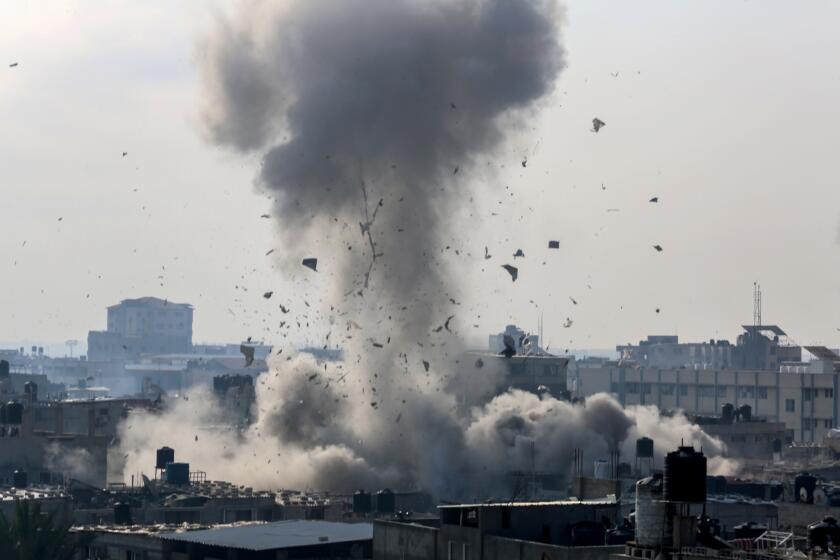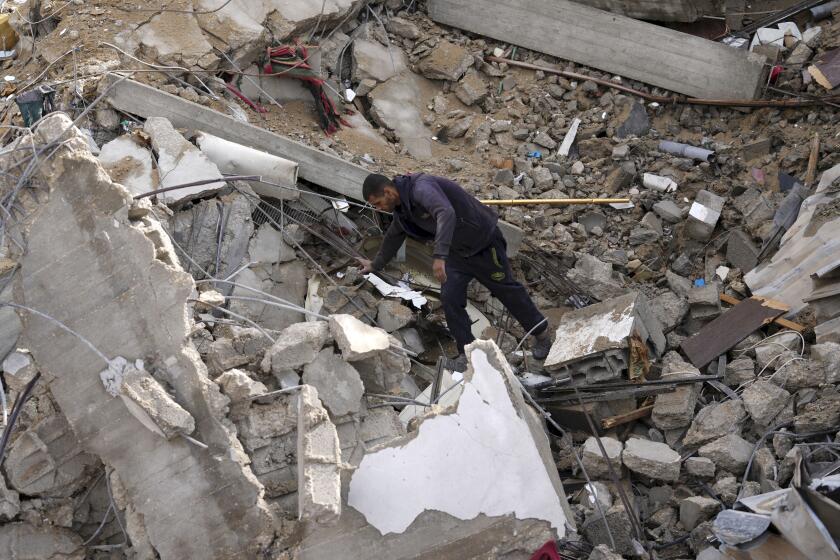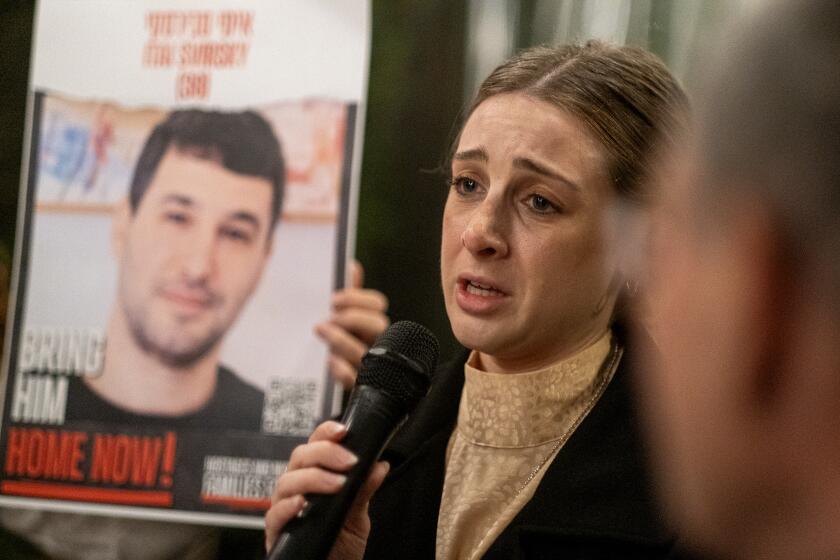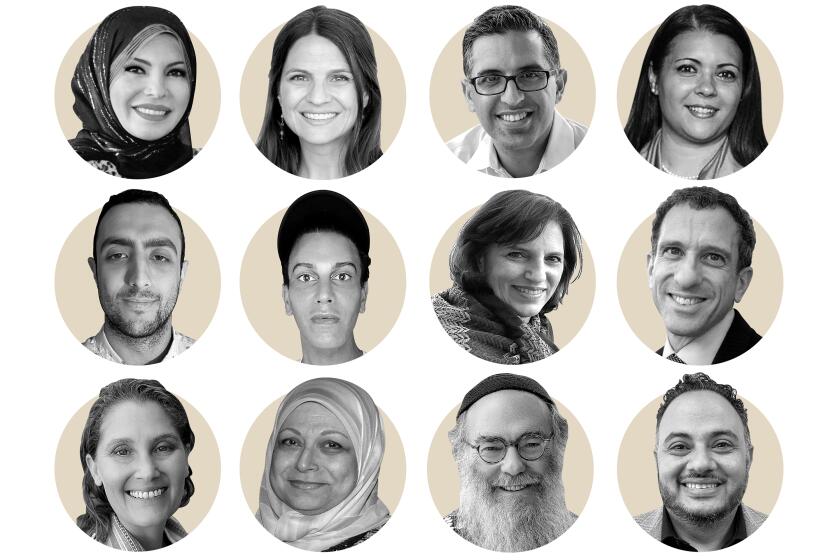Palestinian militants fight in hard-hit areas of Gaza while deal emerges to deliver medicine to hostages
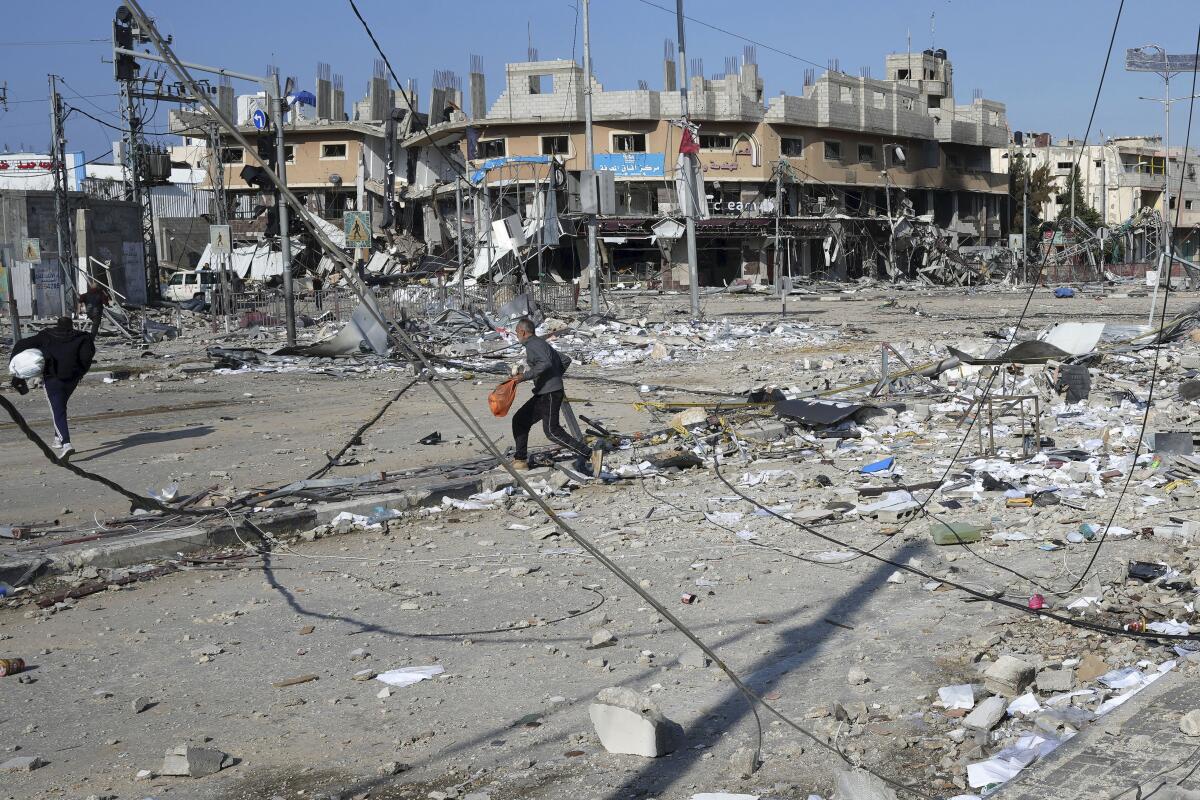
RAFAH, Gaza Strip â Palestinian militants battled Israeli forces in devastated northern Gaza and launched a barrage of rockets from farther south on Tuesday in a show of force more than 100 days into Israelâs massive air and ground campaign against the tiny coastal enclave.
The fighting in the north, which was the first target of Israelâs offensive and where entire neighborhoods have been pulverized, showed how far Israel remains from achieving its goals of dismantling Hamas and returning scores of hostages captured in the Oct. 7 attack that sparked the war.
In other developments, France and Qatar, the Persian Gulf nation that helped mediate a previous cease-fire, said late Tuesday that they had brokered a deal between Israel and Hamas to deliver medicine to Israeli hostages in Gaza, as well as additional aid to Palestinians in the besieged territory.
France said it had been working since October on the deal, which will provide three monthsâ worth of medication for 45 hostages with chronic illnesses, as well as other medicines and vitamins. The medicines are expected to enter Gaza from Egypt on Wednesday.
War in the Mideast has sharply divided California voters along lines of age and ideology. President Biden is caught in the middle, opposed by both left and right for his response to the fighting.
It was the first known agreement between the warring sides since a weeklong truce in November.
Meanwhile, Gazaâs humanitarian crisis is worsening, with 85% of the territoryâs 2.3 million Palestinians having fled their homes and United Nations agencies warning of mass starvation and disease. The conflict threatens to widen after the U.S. and Israel traded strikes with Iranian-backed groups across the region.
Israel has vowed to crush Hamasâ military and governing capabilities to ensure that the Oct. 7 attack is never repeated. Militants stormed into Israel from Gaza that day, killing some 1,200 people, mostly civilians, and capturing about 240 people. With strong diplomatic and military support from the United States, Israel has resisted international calls for a cease-fire.
Nearly half of the hostages were released during the truce, but more than 100 remain in captivity. Hamas has said it will not release any others until Israel ends the war.
The deadly strike comes on the 100th day of the Israel-Hamas war that has devastated Gaza, raising new concerns of a second front.
The longer the war goes on, the more it threatens to ignite other fronts across the region.
Iran fired missiles late Monday at what it said were Israeli âspy headquartersâ in an upscale neighborhood near the sprawling U.S. Consulate in Irbil, the seat of Iraqâs northern semiautonomous Kurdish region. Iraq and the U.S. condemned the strikes, which killed several civilians, and Baghdad recalled its ambassador to Iran in protest.
Iranian-backed groups in Iraq and Syria have carried out dozens of attacks on bases housing U.S. forces, and a U.S. airstrike in Baghdad killed an Iranian-backed militia leader earlier this month.
Elsewhere, Iranian-backed Houthi rebels in Yemen have resumed their attacks on container ships in the Red Sea after a wave of U.S.-led strikes last week. The U.S. military carried out another strike Tuesday. Separately, it said two Navy SEALs are missing after a raid last week on a ship carrying Iranian-made missile parts and weapons bound for Yemen.
Families of Israeli hostages being held by Hamas in Gaza are appealing for the safe return of their loved ones in visits to Los Angeles and other stops in their global campaign.
Israel and Lebanonâs Hezbollah militant group have exchanged fire along the border nearly every day since the war in Gaza began. The strikes and counterstrikes have grown more severe since an Israeli strike killed Hamasâ deputy political leader in Beirut this month, raising fears of a repeat of the 2006 war.
In Gaza, the Israeli military said its forces found some 100 rocket installations and 60 ready-to-use rockets in the area of Beit Lahiya, a town on the territoryâs northern edge. Israeli forces killed dozens of militants during the operation, the military said, without providing evidence.
Mahmoud Abdel-Ghani, who lives in Beit Lahiya, said Israeli airstrikes hit several buildings on the eastern side of the town.
Hundreds of thousands of people fled northern Gaza, including Gaza City, after Israeli evacuation orders in October. Israel shut off water to the north in the opening days of the war, and hardly any aid has been allowed into the area, even as tens of thousands of people have remained there.
Residents reached by phone Tuesday described the heaviest fighting in weeks in Gaza City.
Jewish and Palestinian community leaders share their feelings about Israel and Gaza. No group is a monolith: Perspectives varied within communities as much as between them.
âThe bombing never stopped,â said Faris Abu Abbas, who lives in the Tel al Hawa neighborhood. âThe resistance is here and didnât leave.â
Ayoub Saad, who lives near Shifa Hospital downtown, said he heard gunfire and shelling overnight and into Tuesday and saw dead and wounded people being brought to the hospital on carts.
After weeks of heavy fighting across northern Gaza, Israeli officials said at the start of the year that they were scaling back operations there. The focus shifted to the southern city of Khan Yunis and built-up refugee camps in central Gaza dating back to the 1948 war surrounding Israelâs creation.
But there too, they have encountered heavy resistance. The military said at least 25 rockets were fired into Israel on Tuesday, damaging a store in one of the strongest bombardments in more than a week. Israelâs Channel 12 television said the rockets were launched from the Bureij camp in central Gaza.
Gazaâs Health Ministry said Tuesday that the bodies of 158 people killed in Israeli strikes have been brought to hospitals in the last 24 hours, bringing the warâs overall death toll to 24,285. The ministry does not differentiate between civilian and combatant deaths but says about two-thirds of those killed were women and children.
Settler violence against Palestinians in the occupied West Bank surged even before the Gaza war. The travel ban will also apply to some Palestinians.
Senior U.N. officials warned Monday that Gaza faces widespread famine and disease if more aid is not allowed in. While they did not directly blame Israel, they said aid delivery is hobbled by the opening of too few border crossings, a slow vetting process and continuing fighting in the territory â all of which is largely under Israelâs control.
U.N. Secretary-General AntĂłnio Guterres said U.N. agencies and their partners âcannot effectively deliver humanitarian aid while Gaza is under such heavy, widespread and unrelenting bombardment.â At least 152 U.N. staffers have been killed in Gaza since the war began.
Israeli officials say they have placed no limits on humanitarian aid and have called on the U.N. to provide more workers and trucks to accelerate delivery.
Israel completely sealed off Gaza after Hamasâ Oct. 7 attack and relented only under U.S. pressure. The U.S. and the U.N. have continued to push Israel to ease the flow of aid.
Israel blames the high civilian death toll on Hamas because it fights in dense residential areas. Israel says its forces have killed roughly 8,000 militants, without providing evidence, and that 190 of its own soldiers have been killed in the Gaza offensive.
Jobain reported from Rafah, Magdy from Cairo and Lidman from Tel Aviv. Associated Press writers Jon Gambrell in Jerusalem and Sylvie Corbet in Paris contributed to this report.
More to Read
Sign up for Essential California
The most important California stories and recommendations in your inbox every morning.
You may occasionally receive promotional content from the Los Angeles Times.
